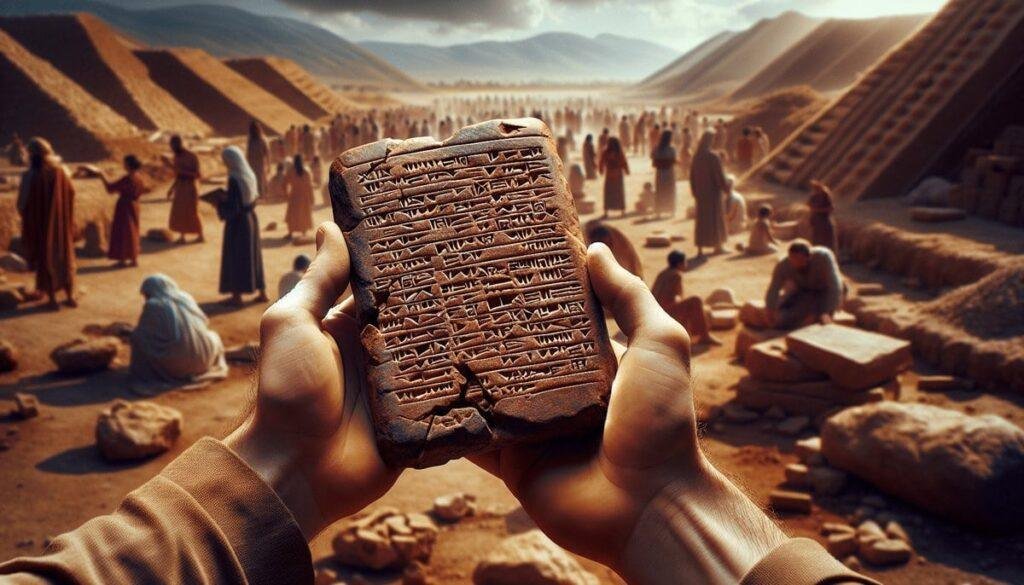Have you ever considered the profound legacy held within sacred vessels used in temple worship throughout history? The intersection of spirituality, anthropology, and archaeology holds a captivating treasure trove of insights into ancient practices that continue to resonate today. Unveiling these enigmatic artifacts not only enriches our understanding of religious rituals of the past but also deepens our appreciation for their ongoing influence.
Discovery Context
Biblical Reference
Sacred vessels are frequently mentioned in the Bible, symbolizing divine presence and ritual purity. They serve as essential implements in the ancient Temple of Jerusalem, where they played crucial roles in worship and offerings. These vessels, often constructed from precious metals, transcended their utilitarian function, embodying spiritual symbolism and integrating the sacred with the tangible.
Historical Background
The history of sacred vessels in temple worship stretches back over millennia and spans numerous cultures. The Temple of Solomon, completed in the 10th century BCE, serves as a pivotal reference point. It highlights the intricate craftsmanship and spiritual significance of these items. Vessels were customarily crafted from gold, silver, and bronze, bearing intricate designs that reflected both artistic mastery and religious dedication. Their creation and use were governed by precise regulations, underscoring their importance in ancient worship practices.
Geographic Location and Recent Findings
Geographically, these vessels emerged in regions that cradled monumental religious sites, particularly in the Middle East. Recent archaeological findings, particularly around the remains of the Second Temple in Jerusalem, have shed light on their construction and use. Excavations have unearthed fragments of these sacred implements, offering invaluable insight into their function and the culture of the people who used them. These findings have allowed scholars to reconstruct historical practices and understand the nuanced roles sacred vessels played in rituals.
Archaeological Evidence
Specific Artifacts
Among the troves unearthed, items like incense burners, libation cups, and sacrificial knives illustrate the diversity and complexity of temple worship artifacts. Each item bore a specific function and meaning. Libation cups, for example, were used to pour ceremonial liquids as offerings to deities. These artifacts illustrate both the richness of religious ceremonies and the meticulous attention paid to their design and use.
Dating Methods
Dating these finds has been an intricate process involving carbon dating and stratigraphic analysis. These methods provide accurate time frames that enable researchers to correlate artifacts with specific historical periods, thus enhancing our understanding of their origins and usage. The accuracy of dating not only underpins the historical narrative but also validates biblical accounts with tangible evidence.
Physical Descriptions and Expert Interpretations
The physical descriptions of these artifacts evoke images of grandeur and reverence. Golden chalices, silver censers, and bronze basins showcase skilled workmanship, with ornate engravings and inscriptions. Experts interpret these features as reflections of not merely decorative artistry but also deep-seated spiritual symbolism. Such interpretations offer a window into the mindset of those who crafted and revered these vessels, allowing modern audiences to connect with ancient cultural and religious sentiments.
Significance
Biblical Implications
These discoveries carry profound implications for our understanding of biblical texts. By correlating archaeological findings with scripture, we can gain a more cohesive and tangible grasp of the religious practices described in these ancient writings. The existence and use of sacred vessels bring to life the rituals and observances that text alone cannot wholly convey, reinforcing the historical veracity of biblical events.
Historical Impact
Historically, the use and destruction of sacred vessels have marked significant moments and transitions. Instances such as the Babylonian conquest and the subsequent rebuilding of the temple serve as pivotal chapters in Jewish history, underscored by the looting and restoration of sacred implements. These vessels echo the resilience and continuity of faith practices despite political and cultural upheaval.
Modern Understanding
In modern times, sacred vessels offer a rich tapestry connecting past and present. Museums and cultural institutions worldwide curate these artifacts, presenting them as essential links in the chain of human spiritual evolution. They inspire contemporary discussions on religious heritage and cultural identity, promoting cross-cultural dialogue and historical awareness.
Research Status
Current research continues to unlock the mysteries surrounding sacred vessels. Advances in technology and interdisciplinary approaches integrate archaeology, theology, and history, providing a multifaceted exploration of ancient religious life. Institutions and scholars worldwide are dedicated to further excavations and analyses, ensuring these vessels remain in the forefront of historical inquiry.
Conclusion
In summary, the study of sacred vessels in temple worship not only enhances our understanding of ancient religious practices but also underscores their continual relevance. The artifacts serve as tangible connections to a spiritual past, offering insights that extend beyond the confines of religious doctrine. As ongoing research delves deeper into these historical discoveries, they provide a continuing source of inspiration and knowledge.
The exploration of sacred vessels invites practitioners, scholars, and enthusiasts to reflect on the interplay of history, spirituality, and culture. For those eager to uncover more about these profound relics, engaging with scholarly works and participating in cultural dialogues is encouraged. Together, these actions fortify the bridge between ancient wisdom and contemporary understanding, ensuring such remnants of the past continue to illuminate our present and future.





